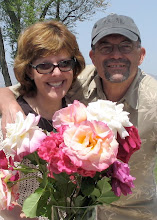As I write this we are flying high above the Pacific Ocean about five hours from San Francisco International if my watch is correct. The Japan adventure is almost over. The posts, while remaining chronological, have fallen behind by about three days. We were two days in Kyoto and then spent our final day in Nara. These three days featured one castle and then a seemingly endless stream of temples and shrines. Some of them were pretty impressive but in the end we were, many agreed, “templed out.”
Kyoto is a major international tourist attraction unlike Goto or Beppu, so consequently the sites we visited were extremely crowded and Western faces were not uncommon. Aside from our group and the JET (Japanese Exchange Teachers) Goto and Kurume were without Western faces, or at least I did not see any. The press of crowds made our experience less intimate but the tour guides we had in Kyoto and Nara helped compensate for this with their knowledge, charm and humor.
Nijo Castle was the first stop in Kyoto. Nijo Castle was the “private residence of the Tokugawa shoguns” who ruled Japan for several hundred years. The most interesting aspect of Nijo Castle was the “nightingale floor,” so called because as you walked across it the floor made chirping noises. This was accomplished by pounding nails through the floor into metal sleeves located on the floor joists. As the boards shifted up and down from the weight of people walking across them the nails would rub against the inside of the sleeves creating the chirping. This feature was installed in the hallway leading from the castle entrance to the interior to warn the residents of intruders.
Our marvelous Kyoto guide, “Casey,” explained that the relationship between shogun and emperor was like that between wife and husband. The Emperor, like the husband, was always number one. The shogun, like the wife, actually exercised the power. You will just have to trust me when I tell you that when Casey wove his explanation it was far more elaborate than the one offered here and funny like a standup comedy routine. Casey was a young Japanese man from Osaka who spent one year at University of the Pacific when he was in college. He possessed an encyclopedic knowledge of Kyoto, the sites we were visiting and Japanese history and culture plus he had a keen appreciation of Western humor. Nancy says he would make a great trainer.
We then visited the Golden and the Silver Pavilion. These structures and the parks surrounding them were built by later shoguns from the same family. The Golden Pavilion was constructed in the 1300s. It was burned down in 1950 (the circumstances of that event are fictionalized in a novel, The Golden Pavilion, written by Mishima Yukio). It was rebuilt and the current structure is covered with 44 pounds of gold leaf. As impressive as that is the Silver Pavilion which, the guidebook points out, “is no more silver than the Blue Mosque in Istanbul is blue” was far more beautiful and enjoyable according to those well known experts on Japanese tourist attractions – Nancy and Steve. Perhaps because, again quoting the guidebook, it “epitomized the so-called Higashiyama style of Zen understatement.” Photos of both are offered and you can draw your own conclusion.
A visit to the Kyoto Handicraft Center provided some retail therapy before the final whirlwind of temples and shrines (although it must be noted that with the exception of Reikanji temples and shrines seem to have no qualms regarding merchandizing). The Reikanji Temple was very cool as it is a private temple open to the public only once or twice per year. Our entree was the fact that the temple grounds feature a large collection of camellias and the head abbess is a member of the International Camellia Society. We were there by invitation and once again welcomed with speeches, tea and mochi. A second private viewing took us to the “Goshiki tsubaki” at a private residence. Japanese hospitality is second to none. Before leaving Kyoto we went to the Kiyomizu Temple and the Yakushiji Temple. The guidebook says of Kyoto that, “Kyoto’s wealth of 1600 temples, 270 shrines, 200 gardens and 500 festivals is so mind-boggling that any visitor to the city runs the risk of premature burn-out.” Although we barely scratched the surface I would be inclined to agree.
A two hour bus ride took us to Nara where we visited the Yakushiji Temple before packing it in for the day. We woke the next morning at the hotel in Nara and after breakfast we visited the Kasuga Shrine, the Byakugoji Temple and the Gokoku Shrine before the final push to the Ana Gate Tower Hotel. That push took us through Osaka, the second largest city in Japan (population 2,653,552). It is unbelievably huge with seemingly mile after endless mile of skyscrapers. As Osaka was the first place we saw in Japan I believe that it was responsible for my first impression that Japan was “relentlessly urban.” That first impression, while not entirely untrue as Japan has 127 million people packed into an area smaller than Montana, does not do the country justice as much of it is suburban and even rural with ample greenery, natural beauty and open space.
A grand farewell banquet was held the final evening in Nara. The food, once again, was spectacular and we bid goodbye to all the new friends we had made from around the world. When we get home I hope to do a few more posts on the subjects of food, culture, guides, the international flavor of the tour and a few other topics but I think I’m done for now.
Photos (copy and paste if the link does not work).
http://www.facebook.com/album.php?aid=23997&id=1680191390&l=be98d7c8d6
http://www.facebook.com/album.php?aid=23998&id=1680191390&l=0200e7b1e1
http://www.facebook.com/album.php?aid=24001&id=1680191390&l=a162681b06
Subscribe to:
Post Comments (Atom)

No comments:
Post a Comment